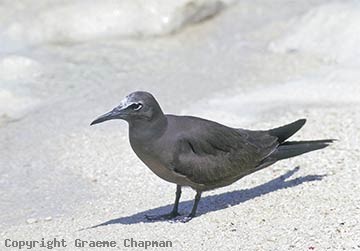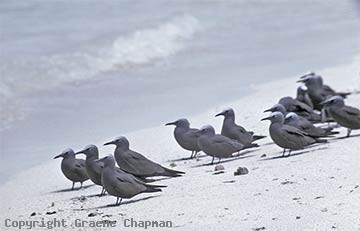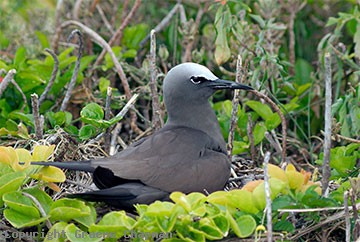Australian BirdsCommon Noddy
|
Distinguishing Common from Black Noddies can be difficult - when on land in eastern Australia, they mostly occur on offshore islands where only a few people get to see them up close. Not all of the published illustrations, even in HANZAB, are ideal so that makes it doubly difficult.
Pics 122215D and 122216D are detailed head studies of Common and Black Noddies. The really obvious difference is in the shape of the bills but notice also that the white periophthalmic rings differ. This is a really easy character to see in photographs. In Black Noddies the bottom of the white ring only reaches six o'clock and nearly all published illustrations get this wrong, the reason being that in museum skins, characters like this are either not there or worse, not in the right place! I've checked this character on a number of birds, not just those from Lady Elliot and Heron Islands, which I have photographed, but also birds in Google Images from all sorts of places and there is almost no variation. Once upon a time, the Black Noddy was known as the White-capped Noddy, an unfortunate name because the whiteness of the cap in both species varies quite a bit. For a good example have a look at pic. 122211D of a pair of Common Noddies with their chick. I assume that the bird that is regurgitating the prawn is the male, not very scientific I know, but note how much whiter his cap is than that of his mate. Looking at a range of Black Noddies, the whiteness of the cap is much more constant (see pics. 124207D and 124209D under Black Noddy). |

122201 ... Common Noddy, immature. |

122202 ... Common Noddy |

122204-D ... Common Noddy, adult. |

122207-D ... Common Noddy |
